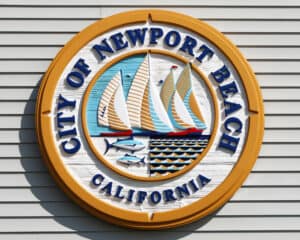
Portland is a well-known city in Oregon.
As a beacon of the Pacific Northwest, many people choose to move to or visit the city.
Whether you know the city as Beervana, City of Roses, Stumptown, or simply Portland, you may be asking yourself why it is so expensive.
After all, you don’t want to spend more than absolutely necessary.
You’ll find high prices everywhere you go. You’ll see the pricing in the real estate, at the grocery store, and in every aspect of everyday life in Portland, Oregon.
There are quite a few reasons Portland is as expensive as it is.
Why Is Portland So Expensive?
![]()
Portland is expensive for many reasons. Some of it has to do with demand and consumerism.
Some of it has to do with the cost of running the city.
By reading through the 20 reasons here, you’ll get an understanding of why prices are high in so many aspects.
1. Cost Of Housing Is High

The median housing cost in the United States is $231,200.
In Portland, however, it’s $419,600.
At nearly double the national average, that can make it difficult to become a homeowner.
It’s even higher than the median housing cost of Oregon, which is $344,200.
Of course, the median housing cost is simply that.
There are some areas of Portland that are even more expensive.
Why?
There are highly desirable communities because of their proximity to the best schools as well as the best shopping areas.
A quick glimpse of single-family homes on the real estate market will show that a home in a good neighborhood that offers 3,000 square feet of living space may go for $800,000 or more.
If you plan on living in Portland, you’ll need to have a good job so that you can afford the mortgage, and that doesn’t even take into consideration such things as property taxes or utilities.
2. Groceries Are Expensive

It’s important to look at what the cost of groceries will be when you’re in Portland.
While there are some budget grocery stores such as Safeway and the People’s Food Co-Op, there are also a variety of gourmet grocery stores.
Depending on where you are in the city, it can be quite the drive to reach the budget grocery stores.
On the cost-of-living index, groceries sit at 103.7 in Portland when the average for the country sits at 100.
Many of the expenses have to do with the cost of transporting goods from the East Coast to the West Coast.
There are many more food manufacturers located on the East Coast.
If you don’t want to pay for the cost of food being transported, you can always choose to buy locally.
However, buying local can come at a cost, too, especially if the food is identified as being organic.
The only groceries that you won’t end up paying a fortune for are some of the foods produced in Oregon.
This includes such things as beef, potatoes, eggs, and onions.
3. The Pacific Northwest Is A Sought-After Region

Portland is a favorite city in the Pacific Northwest for a number of reasons.
It is home to such things as the Oregon Zoo and Forest Park.
There are also Saturday farmer’s markets that pop up throughout the summer.
Some people may even make the trek because it is the home of Voodoo Doughnut.
The list of things to see and do in Portland seems to be never-ending.
However, one of the main attractions of Portland (and of Oregon as a whole) is that there is no sales tax.
People from other states will visit the city to do some serious shopping.
After all, it can be a way to save 7% or more on purchases.
Portland is also popular because of its proximity to both the mountains and the ocean.
Within an hour of driving to the west, people can enjoy the sand and the surf of the Pacific Ocean.
Within an hour of driving to the east, people can take in the views of Mount Hood, complete with countless hiking trails.
The city is also home to a significant amount of art and culture.
There is an abundance of art galleries, performing arts theatres, and exhibits.
Plus, Portland is packed with fountains, and a tour map can guide you throughout downtown to take it all in.
4. Many Neighborhoods Offer Extreme Walkability

Portland is one of the smaller major cities in the Pacific Northwest.
While this draws in a lot of people, it can also lead to the city being more expensive.
When people can walk where they want to go, there’s no need for cars and insurance, so people can save money.
The problem is that it also puts the most walkable areas of Portland in high demand.
Many homes in the walkable communities are subject to bidding wars.
Those who want to buy a home where they can walk everywhere may find themselves paying thousands more than the asking price just to be able to get it.
It’s a simple case of supply and demand.
There’s a limited supply of homes in the most walkable neighborhoods.
Since there’s a lot of demand for such things, the costs are going to be exponentially higher than in the neighborhoods that don’t offer the same level of walkability.
Some of the most sought-after walkable communities include Downtown, the Pearl District, Old Town, Goose Hollow, and the Northwest District.
5. Public Transportation Is Abundant

Portland is well known for its public transportation options.
This puts a significant burden on the city because of the need to maintain operability as well as maintenance.
There’s the MAX light rail that keeps downtown connected to the metro area.
There’s also a Portland streetcar that makes it easy for people to get around.
Further, there’s the TriMet bus service that helps to connect the city with many of the surrounding suburbs.
The city’s goal is to keep the fares as low as possible, which means that the city takes on the financial burden.
Beyond public transportation, much of the city is walkable.
The city has invested a significant amount of money into walkways and pedestrian bridges so that it’s easier for people to get around.
As a result of all of this, the city’s infrastructure is an expensive budget line.
6. Microbreweries Are Everywhere

The cost of beer is expensive wherever you go in Portland.
Why?
Most people aren’t drinking the national brands like Coors and Budweiser.
Instead, they’re drinking local brews from some of the microbreweries located throughout the city.
There’s a reason Portland has earned the nickname of Beervana.
There are more than 70 breweries across the city—and that number is growing every year.
There are brewing facilities and taprooms in the downtown area as well as in virtually every community and suburb.
The breweries all boast unique flavor profiles for their beers.
With an emphasis on buying locally, people will often visit the microbreweries without thinking twice.
There’s the desire to support the local microbreweries whenever possible.
Even the local restaurants will have those beers on tap over what’s offered from the national brands.
While the diversity is great, there’s a significant cost to the local beers.
The breweries are making small batches, so it’s more expensive to produce a keg of beer.
Whether you buy the cans or you get a pint on draft, plan to spend $1 to $2 more because you’re getting the “local” experience.
7. There’s A Green Tax

There’s a “green tax” on virtually everything in Portland.
You’ll find it to be an expensive way of life to save the planet.
While there are plenty of green spaces in the city (with more than 200 city parks), residents and the city government are extremely protective.
Everyone is more than a little eco-friendly, and this can take its toll whether you’re a resident or a visitor.
First, plastic bags are not offered in grocery stores.
This means that if you want a convenient way to bring your groceries out of the store, you’ll have to spend the money on reusable bags.
If you forget your reusable bags the next time you go to the store, you’ll have to buy more.
It can be an added expense at the grocery store that you didn’t plan for.
A green tax is also in place for the larger corporations.
The revenue from this tax is used to fund some of the energy efficiency initiatives throughout underserved communities.
Portland is the first city in the U.S. to pass the tax, and it’s meant to encourage corporations to be more eco-friendly.
The biggest problem with the tax is that corporations will hike up their prices to compensate for having to pay for the tax.
As such, the cost of goods is higher than in the average city in America.
8. The City Caters To Millennials

There’s something to be aware of when it comes to Portland.
It caters to millennials.
At first glance, this may be a great thing, especially if you are a millennial.
It often ranks as one of the top 10 or 15 cities when it comes to where millennials want to live.
It’s important to understand one of the biggest demands of this generation, however: uniqueness.
There are lots of vintage clothing and handmade crafts in Portland.
You’ll find a large number of boutiques and shops that cater to one particular product or another.
With so many things being made to order or being made by hand, it’s going to raise the cost substantially.
As you shop, you may have no choice but to take advantage of the vintage and handmade offerings within the city.
You’ll spend more as a result of it, so the cost of goods will be higher than if you shopped in another city.
The casual and laidback vibe that the city has as a result of the millennials can get expensive, too.
You may want something NOW.
Rather than waiting until a company gets around to it, you’ll feel forced to spend more to get it on your schedule.
9. Ports Are Quite A Distance Away

As products come in from different parts of the world, many will go into seaports that are quite a distance from Portland.
In fact, the most popular seaports based on trade in the US include those in Louisiana, Texas, and New Jersey.
Portland is 1800+ miles from those popular seaports.
There is an added expense to get products into the state, and it must be done by rail or by truck.
When manufacturers have to spend more to get a product to where it needs to go, they will raise the cost of goods.
Even if you decide to buy something directly from a manufacturer, you may be spending quite a bit in shipping and handling.
While you can avoid some of the high expenses by shopping for brands that are located on the West Coast, you’ll find that your choices may be limited.
10. Very Few Factories And Manufacturers Are Based In Portland

You have to look at what is available to you in the city of Portland.
There are quite a few things located close to you, such as beer, art, and parks.
However, that doesn’t help you out when you’re looking to buy clothing or groceries.
There’s a significant cost involved with buying local.
This means that you’ll have no choice but to buy from the various brands that are located outside of Portland and outside of Oregon.
The East Coast has more factories and manufacturing plants than the West Coast.
The stores that you buy from have to pay more to get products shipped to them.
It increases the overall cost of the goods, and they’re going to pass that expense down to the consumers.
If you’ve ever gone into stores across different states, the cost of goods can vary dramatically.
The cost of living overall is 130.8 in Portland while the average city in the U.S. offers a cost-of-living index at 100.0.
It can show you just how much more you’ll spend on everything from clothing to furniture.
11. The Food Scene Is Growing

As Portland becomes a more popular place to be, the food scene is growing.
Many restauranteurs are moving to the city to offer their unique flavors.
More and more James Beard Award-winning chefs are moving to the city, too, and why not?
Beard himself is from Portland.
The problem with the growing food scene is that renowned chefs feel as though they can charge more.
People want good, interesting food.
The demand is there, so the menu prices are going to be higher.
Many of the chefs are experimenting with expensive ingredients as well.
It’s not uncommon to see such pricy ingredients as quail eggs, duck confit, and caviar on menus for brunch, lunch, and dinner.
Those ingredients raise the food cost in a restaurant, so a simple menu item can end up being $5+ more expensive than if standard ingredients were used.
The popularity of the city has led to more expensive real estate, too.
When restaurants open in prime neighborhoods, you can expect to spend more on the meal because you know that they have to charge enough to cover their overhead.
Essentially, you’re going to spend more on good food because of the growing food scene.
As long as you’re prepared to pay the higher menu prices, you’ll be able to taste some good food along the way.
12. The City Is A Coffee Mecca

Portland has become a coffee Mecca.
Although Seattle is the home of Starbucks, Portland has taken the title for having more coffee roasters.
At last count, there were more than 30 coffee roasters throughout the city.
There’s an expense involved in roasting coffee beans as opposed to buying them from a bulk purveyor.
There’s the labor, the equipment, and more.
However, you also get the bragging rights to say that you roast your own.
It puts you in control of the flavor profile that you pass on to your customers.
This is the mindset of many coffee shops in Portland.
They’d rather take on the process of roasting their own coffee so that they can offer a premium product to their customers.
Is the coffee more expensive?
Yes. Is the coffee better for it?
That’s in the eye of the consumer.
Many Portland coffee shops go out of their way to offer a premium, unique product.
With so many roasters in the city, they each have to have a unique hook to bring customers in.
Some focus on fun designs within the foam.
Others have a large selection of baked goods.
Others will even offer tasting classes or flights.
All of this comes at an expense that the consumers must ultimately pay for when they buy a cup of coffee.
13. Homelessness Is Abundant

It’s easy to see how the cost of living in Portland has affected so much of the population.
Homelessness has become more pronounced throughout the city in recent years.
Certain neighborhoods have a high number of homeless individuals, and some pose a threat to public safety because of drug use and other crimes.
Homeless camping has been allowed by the city.
Tents and sleeping bags can be seen in some neighborhoods, and property taxes are often higher in these areas as communities look to fix the problem.
The city has spent a lot of money developing shelter spaces, though it’s an expensive line item in the budget.
It can be expensive, too, because you may feel obligated to donate to one of the many nonprofits that are looking to tackle homelessness throughout the city.
14. Medical Care Is High

Medical costs are high throughout the city.
It’s a constant complaint among residents because they feel as though their options for healthcare are limited.
There are more private hospitals than municipal hospitals, too, which raises the costs that patients have to pay.
One of the reasons that there’s a significant cost to medical care is because so many residents suffer from Seasonal Affective Disorder (SAD).
Essentially, the rainy season of Portland is well known, and it is a long-lasting season in the city.
It can lead to depression because of the lack of sunshine.
When a person goes for weeks or even months without sunshine, it can lead to various aspects of SAD, causing the need for more medical care.
15. Roadwork Is Constant

There’s always roadwork being done in order to account for the growing population.
Traffic tends to be a nightmare in the city.
Many people have a 30-minute commute or more.
With roadwork always being done, it can be a drain on the city’s finances.
It can make it more expensive to live in the city because people have to pay higher property taxes to account for the cost of road construction.
There are a few toll roads in and around Portland.
As the city works to ease the congestion on the roads, the tolls will get higher to pay for the cost of constructing the new roads and bridges.
16. High Crime Leads To High Costs

Portland has had a lot of crime.
Some of this has to do with the “Occupy Portland” protests that occurred over the summer of 2020.
As the city works to clean up all of the damages, it has resulted in considerable costs which have, in turn, resulted in rising costs for residents.
The crime rate has been identified as 59 per 1,000 residents.
The city has one of the highest crime rates in the country, and this includes both violent crimes and property crimes.
With there being more crime, insurance is more expensive.
Homeowners will spend more on home insurance.
Drivers will spend more on auto insurance.
Business owners will spend more on commercial insurance.
The insurance companies have to protect themselves against high claims because of theft, and those buying policies will find that the costs are higher than in many other parts of the country.
17. Rent Costs Are High

The overall cost of living is high in Portland.
It can be difficult for people to buy homes, which leads to more people choosing to rent.
There’s a lot of demand for rental properties, which leaves apartment buildings and landlords knowing that they can charge high rent costs.
The average rent in Portland is $1,400 for a one-bedroom apartment.
This can be $600 more than what the average American will pay for rent.
More and more people are moving to Oregon, and specifically Portland.
Many apartment buildings cannot keep up with the demand, and there are only a limited number of rental properties throughout the city.
The high rent also leaves many people looking for roommates in order to split the costs and obtain affordable housing.
18. Utility Costs Are High

While the average Portland home doesn’t have air conditioning, there are still high utility costs.
It’s been estimated that the average cost for electricity, heating, cooling, and water for a 915-square-foot apartment is approximately $195.51.
People in other states for a similar apartment may pay less than $100.
Some homeowners may choose to invest in solar energy to reduce the cost of electric bills.
However, there is still a cost associated with this, and most people won’t see the full return on investment for 10 to 20 years, particularly because of the constant clouds that hang over Portland.
19. There Are A Lot Of Taxes

Many people move to Portland assuming that it’s going to be cheap.
After all, the entire state has no sales tax.
Looks can be deceiving.
While people won’t pay sales tax on purchases, the state manages to obtain money in the form of other taxes.
The income tax will range from 5% to 9.9% depending on what you earn.
Further, you’ll pay tax on capital gains based on the local state income tax rate.
Depending on the capital gains that you earn, this can add up substantially over the course of the year.
20. Most Major Employers Are Outside Of Portland

If you want to live inside of the city of Portland, you’ll likely be employed by companies outside of Portland if you’re a college graduate.
Major companies like Nike, Fargo, and Adidas are based in Beaverton and other neighboring cities.
The cost of living is often lower in these other cities because they don’t offer the same “big city” appeal.
You’ll spend more when you work for a company outside of Portland.
The money will be spent on gas or public transportation.
Your commute will be longer, too.
Inside Portland, many of the employers are healthcare providers and schools.
There are also various shops and businesses, many of which struggle to pay a living wage.
In Multnomah County, Oregon, the living wage for a single person with no children is $18.86 per hour.
That can be a difficult amount to earn, especially without a college degree.
It also leads to why there are so many people who are homeless within the city.
Earning minimum wage simply cannot provide for all of the basic expenses involved with living in Portland.
Ways To Save Money When Living In Or Visiting Portland

While Portland is expensive, there are opportunities to save.
You just have to be willing to look for the deals.
If you live in Portland, you may want to consider living in one of the suburbs.
While the commute into the city may be a few extra minutes, it can help you with housing costs.
Cost comparisons are critical in all regards, including homes, grocery stores, and shopping areas.
If you’re planning on visiting Portland, take advantage of coupon books.
Because of the walkability, you won’t need to rent a car.
At the very most, you’ll want to grab a pass for public transportation.
Various deals are found throughout the year to help you save on everything from hotels to gallery admissions.




Leave a Reply